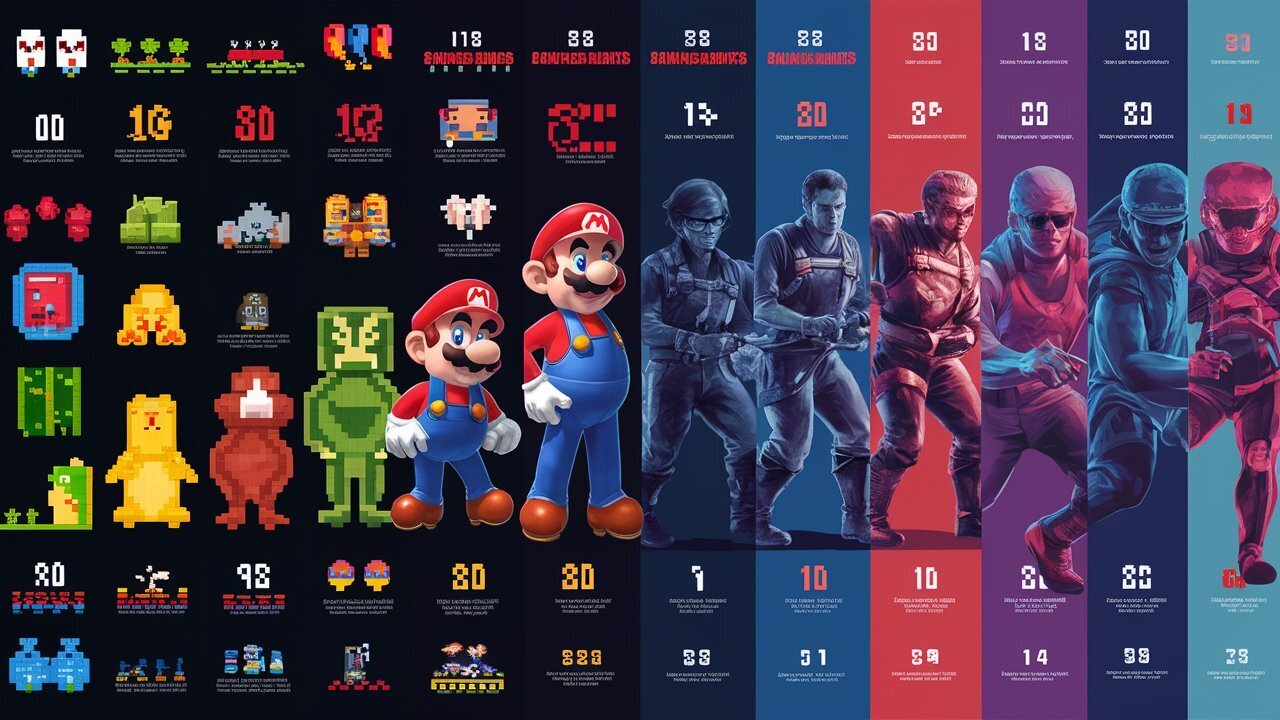Understanding 2D vs. 3D in the Evolution of Game Graphics
27.03.2024

In the dynamic realm of video games, graphics are vital in determining the player's experience. The shift from 2D to 3D graphics has been revolutionary in the gaming industry, bringing us from the pixelated masterpieces of the past to the immersive settings of contemporary titles. Gaining an appreciation for the distinctions between these two design approaches, as well as how they affect gameplay and have applications, can improve your understanding of game design as an artistic endeavor.
Fundamentals: What Do 2D and 3D Graphics Mean?
- Images that are flat and only exist on one plane are called 2D graphics. They look to be drawn on a piece of paper because they are wide and tall yet lack depth. Classic 2D video games such as "Super Mario Bros." and "Pac-Man" have characters and environments that are represented by sprites, which are two-dimensional images or animations that comprise the visual aspects of the game.
- Depth is a third dimension that is introduced by 3D graphics. This provides a sense of realism and immersion and permits objects to be viewed from various perspectives. Games such as "Grand Theft Auto V" and "The Legend of Zelda: Ocarina of Time" demonstrate the potential of 3D graphics by employing polygons to generate depth and volume, giving characters, locations, and objects a more realistic appearance.
The Development of Video Game Graphics
- 2D games frequently feature hand-drawn animations and intricate sprites, giving them a stylized, artistic appearance. Due to its retro charm, 2D is a popular choice among independent developers, who like its simplicity. 3D games, on the other hand, strive for realism and offer intricate textures, dynamic camera angles, and lighting effects for a more engaging experience.
- Gameplay: 2D and 3D games can have very different gameplay mechanics. 2D games usually have top-down or side-scrolling viewpoints, which make the gameplay simple and intuitive. They are particularly good at puzzle games, platformers, and old-school RPGs. However, more sophisticated features like interactive settings, free-roaming exploration, and sophisticated fighting systems are possible in 3D games. As a result, games like first-person shooters and open-world titles have become more popular, emphasizing the importance of mobility and spatial awareness.
- Complexity of Development: Generally speaking, making 2D games is easier than 3D games. Since 2D game production typically requires fewer sophisticated tools and resources, smaller teams or lone creators may find it simpler to create well-rounded games. On the other hand, 3D game production calls for more sophisticated technology and software, as well as more sophisticated modeling, animation, and physics abilities. Longer development cycles and greater production costs are frequently the outcome of this.
The Reasons 2D Games Remain Important
- Even with the prevalence of 3D visuals in contemporary gaming, 2D games continue to hold their allure. 2D graphics saw a return in popularity during the 2010s independent gaming boom, with games like "Cuphead," "Hollow Knight," and "Celeste" winning praise for both their gameplay and artistic merit. These games show that 2D graphics are still very much relevant today; they have a unique aesthetic appeal and can tell a story and evoke emotion in ways that 3D graphics might not be able to.
- Furthermore, a wider variety of players can enjoy 2D games, including those who prefer easier gameplay or have outdated hardware that might not be able to handle the demands of tough 3D games. Because 2D games are less expensive to make, they can also be more experimental and diversified, resulting in original and imaginative experiences that might not be possible in 3D.
The Graphics of Games in the Future
- The distinction between 2D and 3D visuals is becoming more hazy as technology advances. The best of both worlds are offered by hybrid games, which are more popular and incorporate aspects of both genres. For instance, "Octopath Traveler" creates a visually appealing, nostalgic, and contemporary experience by combining 2D sprites with 3D surroundings.
- Moreover, a larger range of gamers can appreciate 2D games, such as those who opt for simpler gameplay or possess outdated hardware that may not be capable of handling the demands of demanding 3D games. Due to their lower production costs, 2D games can be more experimental and diverse, leading to unique and creative experiences that may not be achievable in 3D.
- By pushing the limits of 3D graphics, virtual reality (VR) and augmented reality (AR) are providing progressively more immersive experiences. Nonetheless, 2D games continue to play a significant role in the gaming industry, demonstrating that sometimes, simplicity is just as effective as realism.
Conclusion
- Whether you prefer the realistic immersion of 3D games or the nostalgic appeal of 2D games, each has its own advantages and keeps changing the gaming industry. Knowing the distinctions between 2D and 3D visuals not only helps you appreciate the artistic talent involved, but it also provides you with a better understanding of how games are created and the reasons behind their popularity with players. Both 2D and 3D visuals will surely continue to be essential to the rich and varied world of video games as the industry develops.